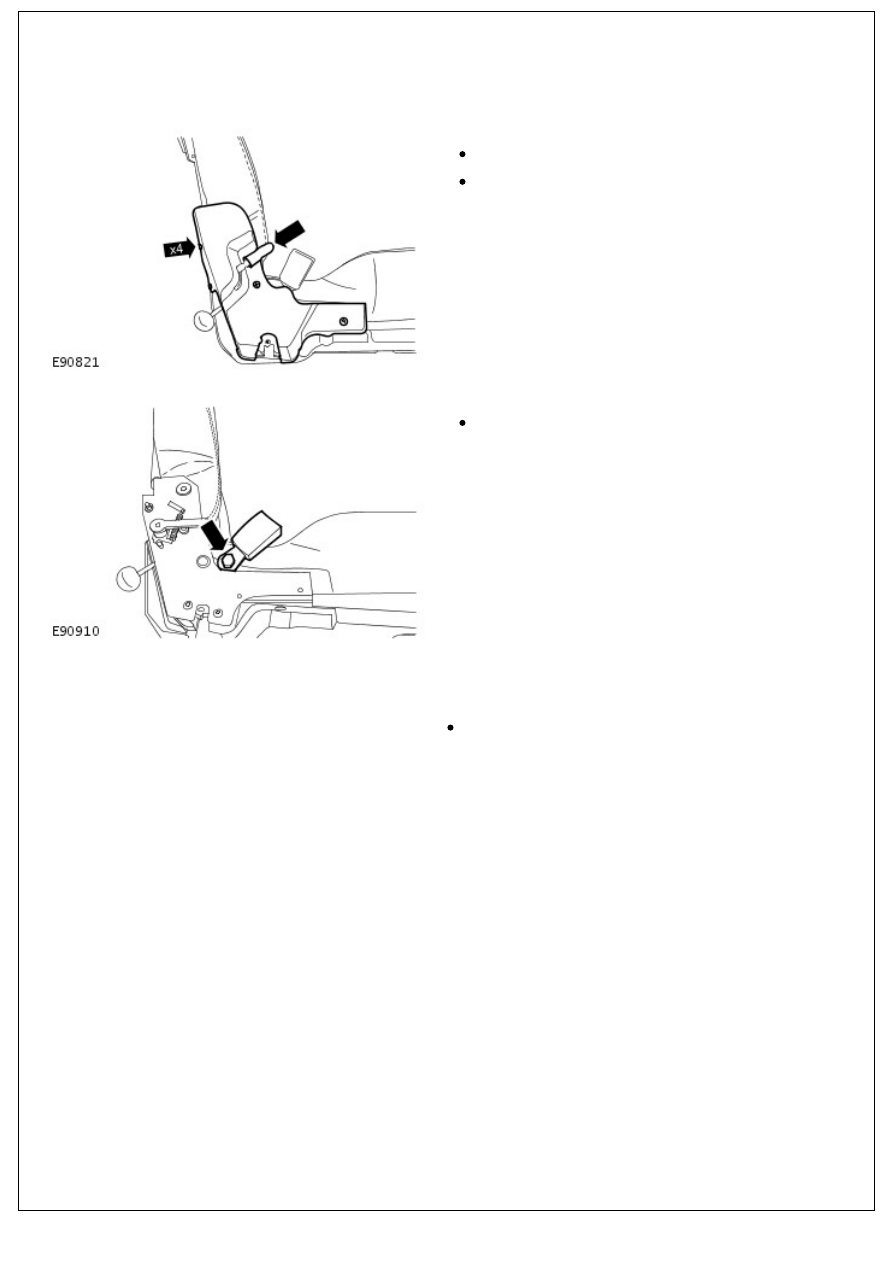Defender. Manual - part 282

Safety Belt System - Third Row Safety Belt Buckle
Removal and Installation
Removal
1. Remove the third row seat inner hinge trim panel.
Remove the third row seat recliner handle.
Remove the 4 screws.
2. Remove the third row safety belt buckle.
Remove the bolt.
Installation
1. To install, reverse the removal procedure.
Tighten the bolt to 31 Nm (23 lb.ft).